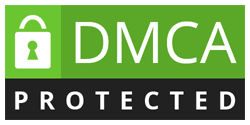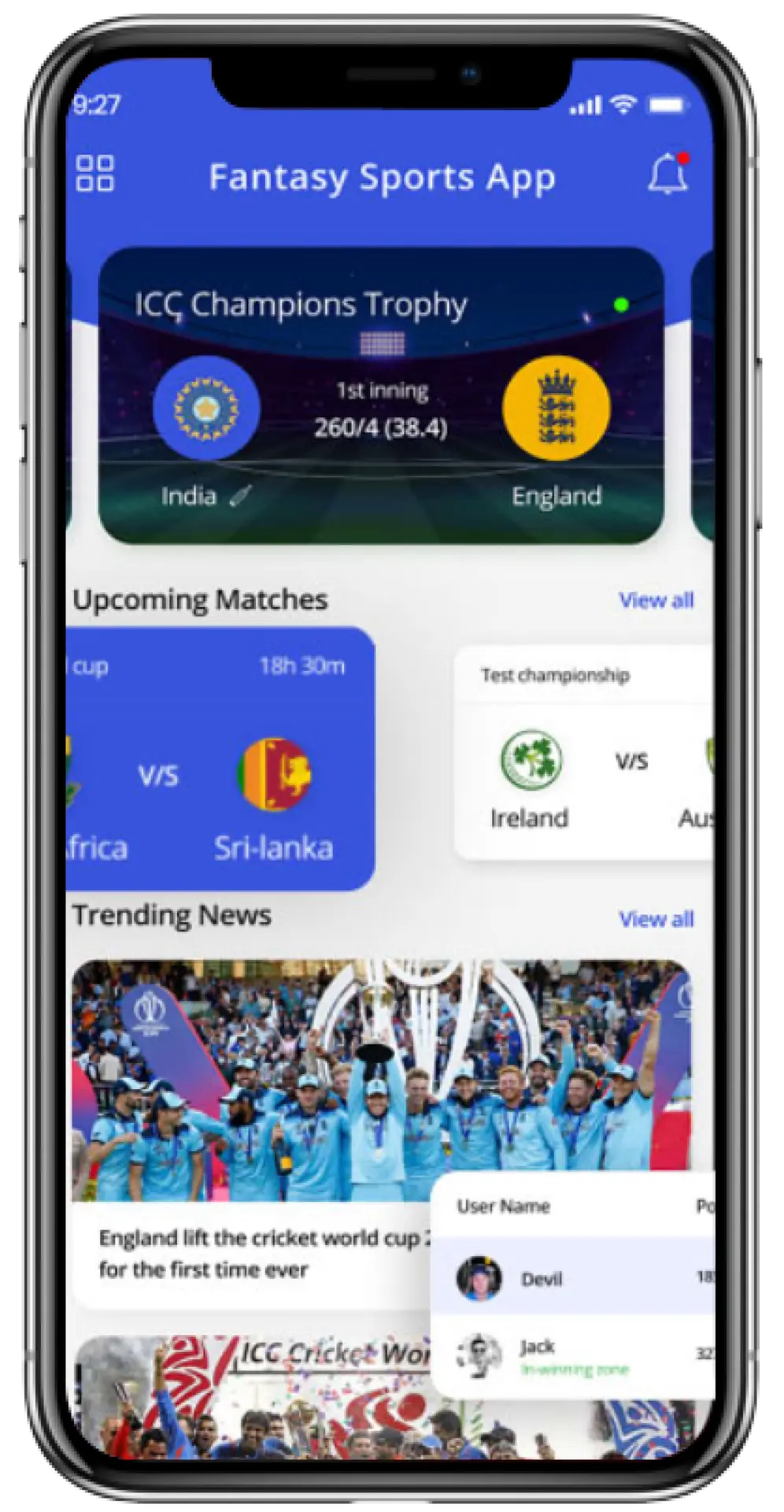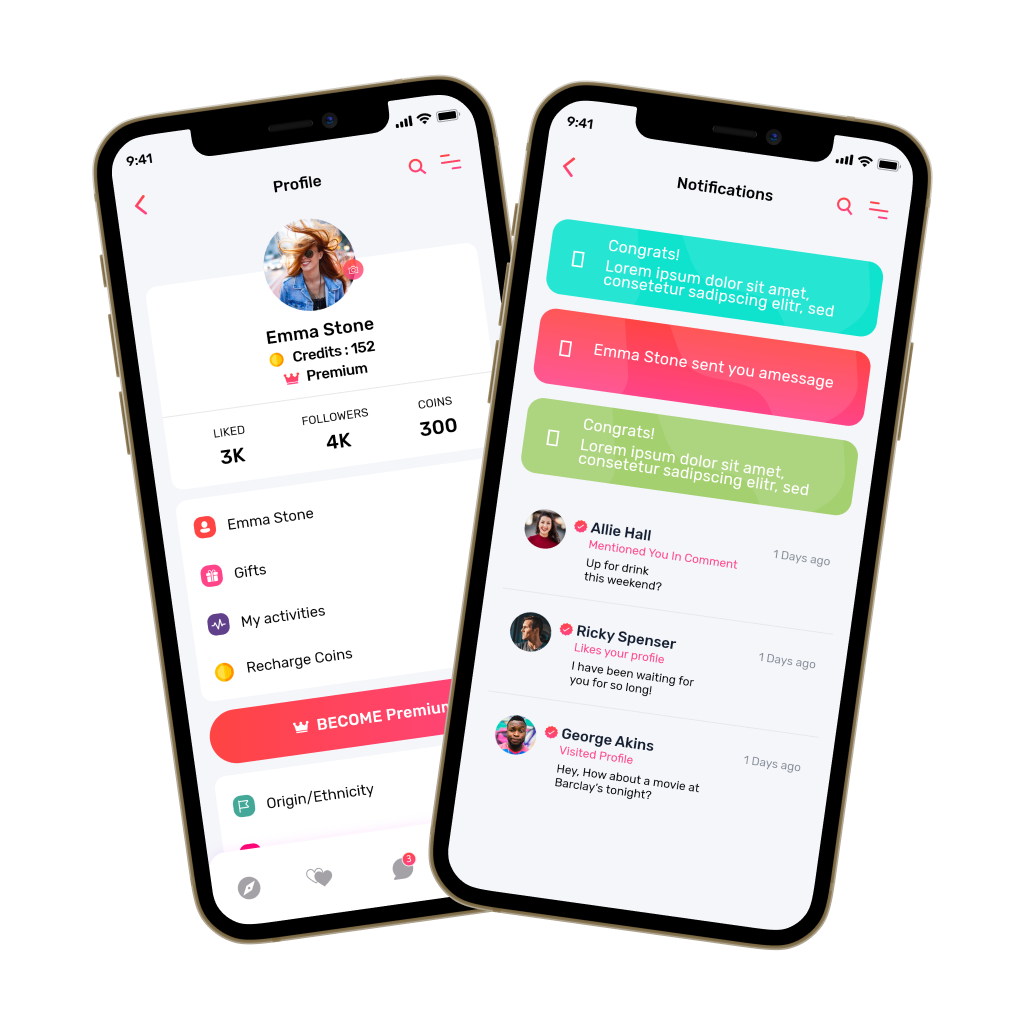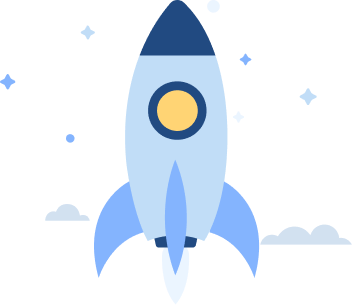There’s something interesting happening in education today as classrooms slowly shift and learning habits evolve with new devices and digital materials. Children now grow up tapping screens instead of turning pages, so parents expect better support, and teachers look for tools that might actually reduce effort. Kids simply want learning that feels playful and natural, and that is one reason apps like Khan Academy Kids are gaining so much attention.
These platforms use interactive storytelling and adaptive engines that adjust to each child in real time. They also rely on child-friendly interfaces and thoughtful gamification that could keep young learners engaged for longer. With AI-powered personalization, these apps may guide progress and build confidence in ways traditional worksheets never could.
We’ve spent years building early-learning and EdTech solutions that use adaptive intelligence and secure, child-centric experience frameworks. Drawing from that hands-on experience, we’ve put together this blog to explain what it truly takes to build an app like Khan Academy Kids. Let’s dive in!
Key Market Takeaways for Kids’ Learning Apps
According to Technavio, the education apps market is on a steady upward path, expected to grow by USD 6.08 billion at a 14.5% CAGR from 2024 to 2029. This momentum is fueled by stronger government support for digital learning and the increasing expectation that technology should complement traditional education. Together, these forces are making kids’ learning apps a central part of how families approach early learning at home.

Source: Technavio
Much of the demand comes from parents seeking interactive, reliable educational tools that fit easily into daily routines. As digital learning becomes more common, apps with structured content and intuitive design are gaining an edge. This shift reflects a broader recognition that high-quality learning apps can reinforce schoolwork while keeping children engaged positively.
Among the standout options, ABCmouse.com offers a wide curriculum for ages 2 to 8 with more than 10,000 activities, blending reading, math, science, and art into a guided learning path with built-in rewards.
Prodigy Math, designed for ages 6 to 12, takes a different approach by merging curriculum-based math practice with a fantasy quest format, encouraging kids to solve problems to move through challenges. Both apps demonstrate how thoughtful design can make educational progress feel fun and motivating for young learners.
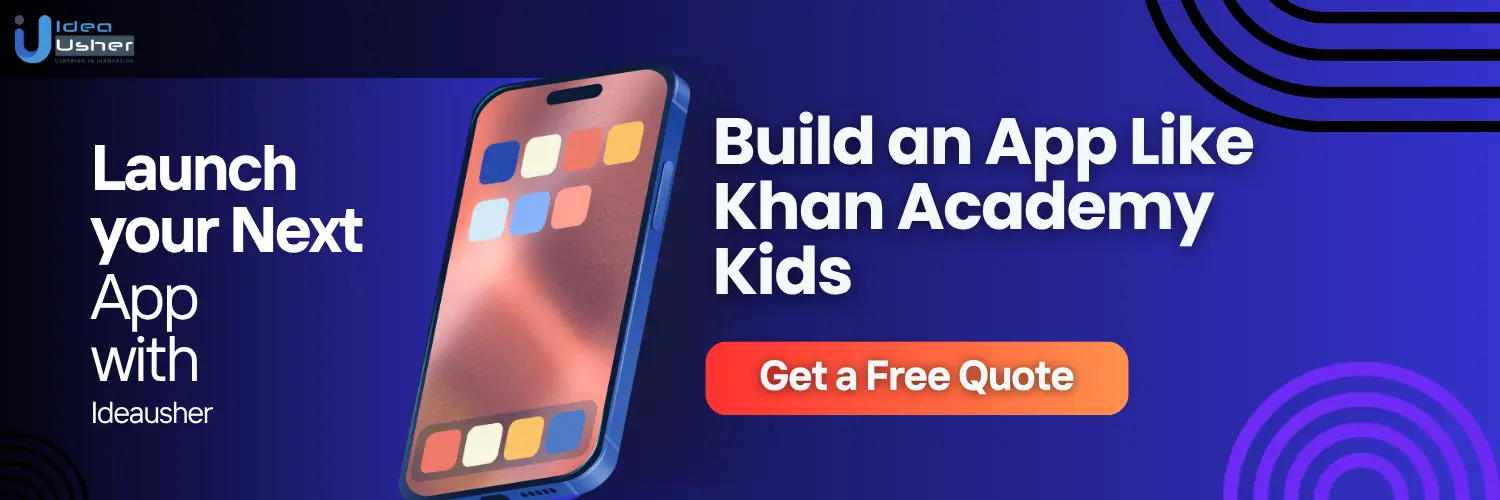
What is the Khan Academy Kids App?
Khan Academy Kids is a free educational app for children aged 2 to 8. It was created by Khan Academy with guidance from early learning experts. The app focuses on literacy, language, writing, math, and social-emotional skills. It is completely free, has no ads, and offers a playful, child-friendly design. Both parents and teachers can use it, and teachers can assign lessons and track progress.
Here are some of its standout features,
- Wide range of foundational skills: The app covers early literacy, math, language, writing, and social-emotional learning. It also includes creative options like drawing, storytelling, and playful activities.
- Engaging design with characters and games: Children learn with friendly characters that guide them through games, stories, and animations. Activities feel more interactive than worksheet-based, and visual rewards help motivate learners.
- Adaptive and personalized path: Kids can explore freely or follow a structured learning path that adjusts to their progress. Lessons are short and designed for young children’s attention spans.
- Accessible for young learners: The interface uses simple visuals and read-aloud instructions, making it suitable even for pre-readers. Some activities can be downloaded for offline use.
- Completely free and ad-free: The app has no ads, subscriptions, or in-app purchases. Families can access all content without cost.
- Parent and teacher tools: Parents can monitor how their children use the app, while teachers can assign lessons and track progress in a classroom setting.
How Does the Khan Academy Kids App Work?
The Khan Academy Kids app uses an adaptive engine that can adjust learning activities very quickly, so each child follows a path that fits their skill level. Its interface is simple, so young learners can navigate through lessons and creative tools without confusion. Parents and teachers may view a secure dashboard that shows progress data, and they can assign targeted tasks when needed.
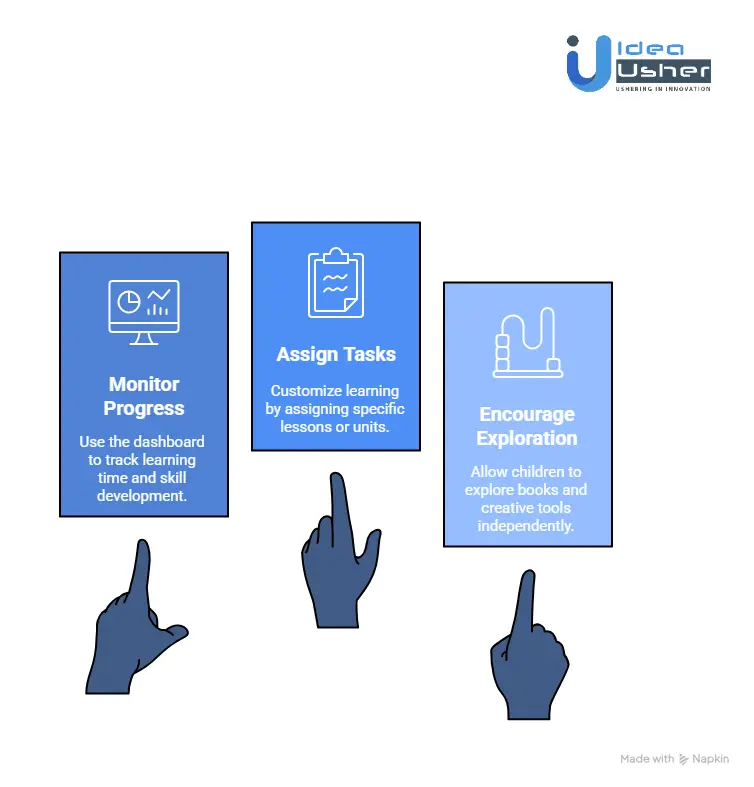
1. How It Works for Children
Khan Academy Kids is intentionally simple for young learners. From the moment they open the app, children are guided through an experience that feels fun and natural rather than complicated or overwhelming.
A Simple Start: The Big Green Button
Children are greeted by a friendly animal character who directs them to a single large “Play” button. Tapping it begins their learning path immediately. This simplicity keeps the experience accessible for children who may not yet read.
A Learning Path That Adapts Automatically
Instead of offering random games, the app builds a personalized sequence of activities. It considers the child’s age, strengths, areas for growth, and recent performance. For example, a child who excels in number activities but struggles with phonics will naturally receive more literacy practice.
The Circle of Learning
The child’s path pulls from five interconnected areas, creating balanced and developmentally appropriate progress:
- Literacy: Phonics, reading, letter recognition, early writing
- Math: Counting, number sense, shapes, basic operations
- Thinking Skills: Logic puzzles, memory activities, problem solving
- Social Emotional Learning: Recognizing feelings, empathy, understanding relationships
- Creativity: Drawing tools, storytelling prompts, coloring
Books and Creative Tools
Outside the guided path, children can explore a large library of illustrated books. Many books include “read to me” narration. The creative studio allows children to draw, record stories, and design characters, encouraging imagination and independent expression.
2. The Invisible Engine
Children see friendly characters and games. Behind the scenes, the app is constantly analyzing how each child learns.
A Continuously Updating Adaptive Algorithm
The algorithm evaluates much more than right or wrong answers. It analyzes time spent, repeated errors, and patterns of hesitation. This information helps the app understand what a child knows and what they are ready to learn next.
A Deeply Mapped Curriculum
Every piece of content, whether a book, video, puzzle, or game, is tagged with the specific skill it teaches. This detailed mapping allows the system to choose the most appropriate activity at any moment.
A Secure and Child-Safe Architecture
Khan Academy Kids is built as a protected space designed for young learners. It includes:
- No advertisements
- Very limited data collection
- COPPA-compliant systems
- Parent gates that keep children from accessing adult settings
Privacy and safety are built into the foundation of the app.
3. How It Works for Parents and Teachers
While the child learns, the app quietly collects meaningful data for the adults who support them.
Progress Dashboard
Parents and teachers can log into a separate interface that shows:
- Total learning time
- Skills that are developing well
- Skills that may need more practice
- A full history of books read, games played, and lessons completed
This gives adults insight without interrupting the child’s experience.
Assignment Tools for Educators
Teachers can assign specific lessons or units to an entire class or to individual students. This allows targeted instruction, reinforcement of classroom lessons, and customized support. It also helps the app integrate into structured learning environments.
Business Model of the Khan Academy Kids App
Khan Academy Kids is a free learning app for children ages 2 to 8. It offers a large library of books, games, and lessons focused on early reading, math, creativity, and social–emotional learning. The app is free for families and classrooms, reflecting Khan Academy’s mission to make high-quality education accessible to everyone.
Although the app is free to users, schools and districts can opt into an expanded service model. These paid offerings cost roughly $5 per student and provide additional resources, implementation support, and data tools that help educators integrate the program more effectively.
Revenue Streams
Khan Academy’s overall funding supports both its main platform and the Kids app. Its revenue comes from several key sources:
Philanthropic Donations
Much of Khan Academy’s financial support comes from individual donors and major foundations. Notable contributors include the Musk Foundation, which gave $5 million in 2021, along with ongoing support from organizations such as the Bill & Melinda Gates Foundation.
Grants
Khan Academy regularly receives grant funding from foundations and corporate donors such as Google and AT&T. These grants help sustain platform development, research, and content creation.
Corporate and Community Giving
Corporate partnerships and community fundraising efforts play a significant role in annual revenue, adding stability to long-term operations.
Earned Income
While the organization is primarily donation-funded, it generates some earned income through:
- District and school licensing
- Partnerships and educational programs
- Professional learning resources for teachers
Khan Lab School
Khan Academy also earns tuition revenue from the Khan Lab School, an independent nonprofit school inspired by Khan Academy’s teaching philosophy.
Financial Performance and Funding
In 2023, Khan Academy reported about $107.3 million in total revenue, with most of it coming from philanthropic and corporate donations. Key FY2023 revenue sources included:
- $15.3 million in corporate gifts
- $9 million in community and learner contributions
- About $12 million in earned income from partnerships and program services
Operating expenses totaled $72.5 million, with 84 percent going directly to program services such as curriculum creation, technology infrastructure, and educator support. The remaining expenses covered administration and overhead.
The organization ended the year with $93.7 million in net assets and $11.5 million in liabilities, demonstrating a solid financial position supported primarily by long-term donor investment.
Founder and CEO Salman Khan earns a salary of just over $1.2 million, which is consistent with executive compensation levels for large education nonprofits operating at a global scale.
Funding History
Khan Academy has raised at least $22.45 million across multiple funding rounds and grant programs. Key funding events include:
- Multi-million-dollar grants from the Amgen Foundation, including $3 million awards in 2017 and 2020
- A $3 million grant from Omidyar Network in 2016
- A small Series A round in January 2022 totaling $10,000
- A $3.5 million loan secured in 2020
Over time, the organization has received more than $16 million in documented grants and donations on top of its substantial annual philanthropic revenue.
Other Popular Business Models for App-like Khan Academy Kids
Khan Academy Kids operates under a non-profit structure, whereas a commercial EdTech venture must be built on a sustainable, profitable model. For entrepreneurs and investors, the key question is which business models can generate predictable, scalable revenue while serving the needs of families and schools.
Below is a financial analysis of four proven business models for a children’s educational app, complete with realistic market calculations.
Model 1: The Freemium B2C Model
The free version includes basic learning paths, limited activities, or a small set of games. The paid subscription unlocks the complete curriculum, advanced progress tracking, offline downloads, and an ad-free experience.
Real World Example
ABCmouse, Lingokids, and Adventure Academy all use variations of this model. Each company grew rapidly by pairing large-scale marketing with a clear subscription offer. Freemium is especially effective for products that appeal to preschool and elementary families because parents expect digital learning apps to start free.
Revenue Potential and Calculation
Key Metric: Monthly Recurring Revenue (MRR)
Assumptions
- Total addressable user base: 1,000,000 registered families
- Free to paid conversion rate: 2.5 percent
- Monthly subscription price: 7 dollars per paying user
Calculation
- Paying subscribers: 1,000,000 × 2.5 percent = 25,000
- MRR: 25,000 × seven dollars = 175,000 dollars
- Annual recurring revenue: 175,000 dollars × 12 months = 2.1 million dollars
This model offers predictable recurring revenue and becomes highly profitable once the user base scales.
Model 2: The B2B2C School and District Licensing Model
Schools pay either a per-student fee or a flat annual fee to access the premium platform. The school version includes teacher dashboards, assignment creation, analytics, and classroom-level management tools.
Real World Example
Epic, Newsela, BrainPOP, and Lexia have built multi million or even multi hundred million dollar businesses through school licensing. These companies prove that schools will pay meaningful amounts per student as long as the product improves instruction and aligns with learning standards.
Revenue Potential and Calculation
Key Metric: Annual Contract Value (ACV)
Assumptions
- Target: 50 mid-sized school districts
- Students per district: 10,000
- Adoption rate: 40 percent, equal to 4,000 students
- Price per student: 12 dollars per year
Calculation
- Licensed students: 50 × 4,000 = 200,000 students
- ACV: 200,000 × 12 dollars = 2.4 million dollars per year
A single district can represent a six figure annual contract, making this one of the most valuable business models in EdTech.
Model 3: Strategic Partnerships and Sponsorships
A publisher, museum, or major brand sponsors a themed module. For example, a wildlife module might be sponsored by a science organization or a literacy program might be funded by a children’s book publisher. These partnerships enrich the curriculum while generating high-margin revenue.
Real World Example
Khan Academy has partnered with NASA, PBS, MoMA, and major academic institutions. These partnerships give learners access to expert content while expanding the app’s credibility.
Revenue Potential and Calculation
Key Metric: Sponsorship Fee
Assumptions
- User base: 500,000 active families
- Partnerships secured per year: five
- Sponsorship fee: 150,000 dollars per partnership
Calculation
- Partnership revenue: five × 150,000 dollars = 750,000 dollars annually
This model monetizes audience reach without charging families, which helps preserve the feeling of an accessible, parent-friendly product.
Model 4: The Hybrid Model
A hybrid structure might include:
- A freemium B2C app that upgrades to a paid subscription
- A dedicated B2B platform for schools
- Sponsored modules from trusted partners
Real World Example
Lingokids uses this model and has grown into one of the leading global children’s learning apps. By monetizing in several ways, it has reduced risk and increased opportunities for expansion into new markets.
Revenue Potential and Calculation
Conservative starting estimates
- B2C subscription revenue: 1.5 million dollars per year
- B2B licensing revenue: 1.5 million dollars per year
- Partnership revenue: 500,000 dollars per year
Total potential annual revenue: 3.5 million dollars
A hybrid model reduces risk, increases revenue diversity, and creates multiple growth engines for long-term scalability.

How to Build an App Like Khan Academy Kids?
Building an app like Khan Academy Kids starts with a structured learning framework that anchors every activity to early skill development. You will also need adaptive logic that responds to how children learn and a smooth content engine that keeps the experience lightweight.
Having developed numerous apps comparable to Khan Academy Kids, we have established a clear and effective methodology, and here is exactly how we do it.

1. Educational Framework Mapping
We begin by mapping your learning goals to trusted early education standards, such as Head Start, Common Core, and the Early Years Foundation Stage. Our team then defines the micro skills children need to develop, from phonics and numeracy to vocabulary and emotional recognition, creating a clear foundation for content design.
2. Content Engine & Content Pipeline
Next, we build a flexible content engine that supports books, phonics audio, animations, SEL modules, and interactive activities. We pair this with a scalable CMS that includes tagging, versioning, and skill mapping so your content team can update or expand material without friction.
3. Adaptive Learning Algorithms
We craft adaptive learning models that can distinguish between mastery and guessing, enabling us to guide each child at the right pace. Our rules for difficulty progression, repetition, and remediation ensure every learner receives a personalized and developmentally aligned pathway.
4. Create a Child-Safe UX
To support safe exploration, we design an interface with large tap targets, read-aloud navigation, guided flows, and character-led feedback. The entire environment is closed and ad-free so children stay focused and protected throughout the experience.
5. Cross-Platform Scaling
We architect the app to perform smoothly across iOS, Android, and optional web environments. Our development approach keeps animations lightweight, ensures fast load times on low-end devices, and sets a strong foundation for scaling as your user base grows.
6. Build Teacher/Parent Dashboards
Finally, we create dashboards that help parents and teachers manage groups, assign activities, and monitor skill development. These tools integrate with LMS systems when needed, giving adults clear, actionable insights into each child’s learning journey.
How Personalized Learning Boosts App Engagement by 60%?
Personalized learning can boost app engagement by nearly 60 percent because it adapts to each child’s skill level and keeps them in a steady flow state. A Penn State University trial showed that when an app added personalized recommendations, children consumed much more content because every activity felt achievable and relevant. If your system can analyze performance data and adjust tasks in real time, it will likely create a smoother, more motivating learning experience.
The Psychology Behind the Engagement Spike
Personalized learning resonates because it aligns with how children naturally process information. It adjusts the challenge level, supports confidence, and keeps them in a sustained state of curiosity.
Keeping Kids in the “Just Right” Zone
Think of Goldilocks: not too easy, not too hard. Personalized learning stays inside the learner’s “just right” zone. The app avoids tasks that feel trivial and skips tasks that feel overwhelming. Operating in this optimal zone of proximal development keeps a child in a flow state where learning feels smooth, doable, and enjoyable.
Building Confidence Through Mastery
When a child completes a task that matches their actual skill level, it sparks real confidence. The experience becomes encouraging instead of discouraging. Over time, this builds autonomy. Children begin to see the app as a helpful guide rather than a rigid system pushing them forward.
Motivating Through Mastery, Not Just Rewards
Badges, stickers, and stars are fun, but they are not enough on their own. The strongest form of motivation is the internal satisfaction of mastering something new. Personalized learning makes this intrinsic reward a regular experience, which naturally leads to longer engagement and more consistent return sessions.
What Makes Personalization Possible?
That 60 percent increase is not the product of guesswork. It comes from a structured, intelligent system running in the background. Personalization succeeds when the three pillars work together.
1. The Data Foundation
A personalized system begins with real-time, high-quality data. Apps like ABCmouse track detailed progress through their learning paths, using activity completion, accuracy, and quiz scores to understand what a child is ready for next. At scale, this requires a reliable, well-organized database capable of handling millions of microinteractions.
2. The Intelligent Algorithm
Once the system has data, it needs a model that can interpret it. Platforms such as Khan Academy Kids likely use algorithms that build a dynamic profile for each learner. If a child struggles with rhyming in Lingokids, the system may shift toward activities that strengthen phonological awareness before reintroducing rhymes. This adaptive logic is what makes the experience feel supportive rather than random.
3. The Tagged Content Library
Even the smartest algorithm is useless without a well-structured content library. Apps like Kiddopia tag each activity with specific skills, such as counting, animal recognition, or fine motor development. These tags create the “map” the algorithm navigates to deliver the next best activity. The richer and more precise the tagging, the more accurate the personalization.
Challenges to Building an App Like Khan Academy Kids
The vision to create a meaningful, child-focused learning app is inspiring. However, the path from idea to a polished, scalable platform comes with real technical, creative, and compliance-related challenges.
At Idea Usher, we have helped many clients navigate this journey, and over time, we have identified the issues that keep recurring. More importantly, we have mastered practical ways to solve them.
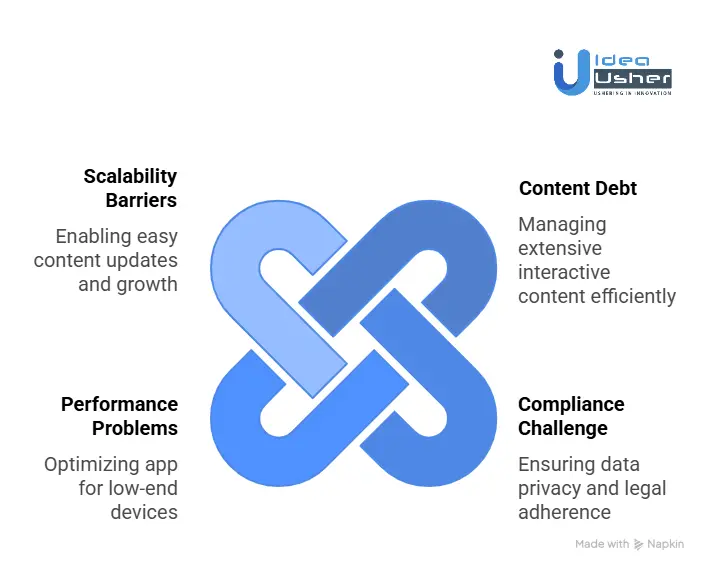
1. The Content Debt Problem
An app similar to Khan Academy Kids requires thousands of interactive pieces. These include animations, illustrated stories, activity screens, audio prompts, and educational videos. This creates what we call content debt. If you try to produce everything from scratch, the time and cost can overwhelm the project long before launch.
Our Solution
We reduce the burden by creating a reusable system rather than building each activity individually.
- Our team develops a collection of pre-coded components such as drag-and-drop cards, tap-to-answer modules, drawing canvases, and animation blocks.
- Your content creators can re-skin and re-configure these elements without touching the underlying code.
2. The Compliance Challenge
Working with children’s data is extremely sensitive. A single mistake in collection, storage, or consent handling can result in legal issues and loss of trust. Compliance is not something you can add at the end. It must shape the architecture from day one.
Our Solution:
We design systems that respect privacy at the structural level.
- Child data is anonymized, separated from parent accounts, and minimized so only essential information is ever stored.
- For parental access, we build multi-step verification gates that are simple for adults but difficult for young children to bypass.
3. Performance Problems
Children often use older tablets or low-cost Android devices with limited RAM and weaker processors. If your animations lag or screens take too long to load, children lose interest quickly. This leads to poor engagement, low retention, and high uninstall rates.
Our Solution:
We optimize images, audio files, and animation sequences so they load quickly without sacrificing visual quality.
- The app also predicts which activities a child will use next and caches those assets in advance.
- We built a complete offline mode with a local database, so progress is saved instantly and learning continues even when the device is disconnected.
4. Scalability Barriers
As your curriculum grows, updating activities and releasing new lessons can slow down the entire organization. If developers are required for every update, your team becomes stuck and your roadmap stalls.
Our Solution:
We build a custom content management system that lets educators and content managers handle updates on their own.
- They can upload new activities, adjust difficulty levels, map lessons to standards, and release new content groups directly from the dashboard.
- Assets are delivered through a CDN so children receive updates instantly without downloading a new app version.

Tools & APIs Needed to Develop an App Like Khan Academy Kids
Creating a high-quality children’s learning app is not just about fun animations or colorful characters. Behind every smooth interaction is a carefully chosen blend of tools, APIs, and frameworks designed to keep the experience engaging, safe, and scalable. Below is a clear, practical look at what goes into building a child-friendly EdTech platform, written with real-world development in mind.
1. Cross-Platform Development
To ensure your app works consistently at home, in classrooms, and across many types of devices, a cross-platform strategy is essential.
Flutter / React Native (Core App Development)
Flutter and React Native allow you to maintain a single codebase while shipping to both iOS and Android. They provide:
- Excellent performance for interactive UI
- Fast development cycles
- Strong community support
They are ideal for most of the app experience, including menus, dashboards, storybooks, simple games, and animations.
Unity (Advanced Play-Based Learning)
For more sophisticated or game-like learning activities such as puzzles, physics interactions, or immersive scenes, Unity is the best choice. It delivers high frame rate gameplay and consistent performance across devices.
Kotlin / Swift (Native Modules)
Some features require deeper access to sensors, storage systems, or OS-level APIs. When this is the case, building focused native modules in Kotlin or Swift ensures the smoothest possible experience.
2. Backend & Storage
Children’s learning apps generate large amounts of content and usage data. The backend must be ready to grow along with your audience.
Cloud Infrastructure (AWS, Google Cloud, Firebase)
Modern cloud platforms offer global scalability, managed databases, serverless functions for efficient app logic, and built-in monitoring and security.
Hybrid Databases (NoSQL + Relational)
Using both types of databases provides flexibility and proper structure:
- NoSQL databases such as Firestore or MongoDB work well for activity logs, session data, or loosely structured records.
- Relational databases such as PostgreSQL are ideal for user accounts, content mapping, curriculum structures, and other structured information.
This combination keeps performance high and data well-organized.
3. Machine Learning & Adaptivity
A great learning app does more than deliver content. It adapts to the child’s pace and needs.
TensorFlow Lite (On-Device Personalization)
Running lightweight machine learning models on the device allows real-time personalization and faster feedback. It also supports privacy since sensitive learning patterns remain on the device. This approach helps keep the platform aligned with child protection laws.
AWS Personalize or Custom Machine Learning Models
For large-scale recommendations that depend on aggregated, non-personal data, the cloud can refine suggested lessons, adjust difficulty, and predict the next suitable activity. This is where the platform’s intelligence evolves over time.
4. Compliance & Security
When building for children, trust and protection are not optional. They define the entire product.
COPPA Compliance and Parent Gateways
This includes:
- Collecting no personal data from children
- Using secure parent gates for adult-only settings
- Managing parental identity and consent through services such as AWS Cognito with custom flows
Data Encryption
All data must be encrypted both in transit with TLS and at rest on cloud servers and local devices. Offline content should also be encrypted to protect stored assets. Security architecture is equally as important as the user interface.
5. Content Delivery
Children often use learning apps in places with unstable or no internet. The app must handle this gracefully.
CDN for Fast Global Delivery
Using services such as CloudFront or Cloudflare ensures quick loading, reduced server strain, and reliable delivery of videos, books, images, and game assets.
Smart Local Caching and Offline Mode
A thoughtful offline strategy includes pre-downloading important lessons, prioritizing storage for upcoming activities, and automatically syncing progress when the device reconnects. The learning experience should not stop because the connection does.
Conclusion
Building an app like Khan Academy Kids takes more than strong engineering because you must combine pedagogy, cognitive science, scalable architecture, secure compliance practices, and a clear monetization plan into one unified product that children will actually enjoy. With the right roadmap, you can move through each phase with confidence, and with an experienced team, you can create a platform that feels trustworthy, performs reliably, and grows with real market demand. Idea Usher supports founders and enterprises at every stage, from early discovery through design, development, deployment, and long-term growth.
Looking to Develop an App Like Khan Academy Kids?
Idea Usher can help you build an app like Khan Academy Kids by designing a solid learning flow that actually supports growth and by engineering a secure setup that protects young users at every step.
Our team will translate your vision into a scalable product that runs smoothly on any device. With over 500,000 hours of coding experience and a team led by ex-MAANG/FAANG developers, we can handle every technical layer with confidence and deliver work that will truly stand out.
- From Pedagogy to Code: We build more than features; we build learning journeys.
- Fort-Knox for Kids: We engineer COPPA-compliant, secure environments from the ground up.
- Proven Excellence: Our portfolio showcases our ability to deliver world-class applications.
Your vision for education is unique. Let’s build the technical masterpiece to power it.
Check out our latest projects and let’s start a conversation!
Work with Ex-MAANG developers to build next-gen apps schedule your consultation now
FAQ
A1: A project of this scale typically takes 6 to 18 months because teams must plan the curriculum, design adaptive learning flows, and build a stable backend. You might move faster with reusable frameworks, yet a polished learning experience still needs careful testing and thoughtful iteration at every stage.
A2: You will almost always need an educator or curriculum expert because sound pedagogy guides every product decision. A developer might build strong features, but a specialist ensures each activity supports real learning goals and aligns with early childhood standards.
A3: Yes, you can monetize it through multiple technical models, such as B2B licensing for schools, premium curriculum packs, tiered subscription options, and partnerships with institutions. These channels allow you to keep the core app free for families while still creating a sustainable business.
A4: AI can meaningfully lower production costs by assisting with asset creation, voice generation, and adaptive content flows, yet every output still needs expert review. You might use AI to draft lessons or generate variations, but your team must validate the material for accuracy, safety, and curriculum alignment.






